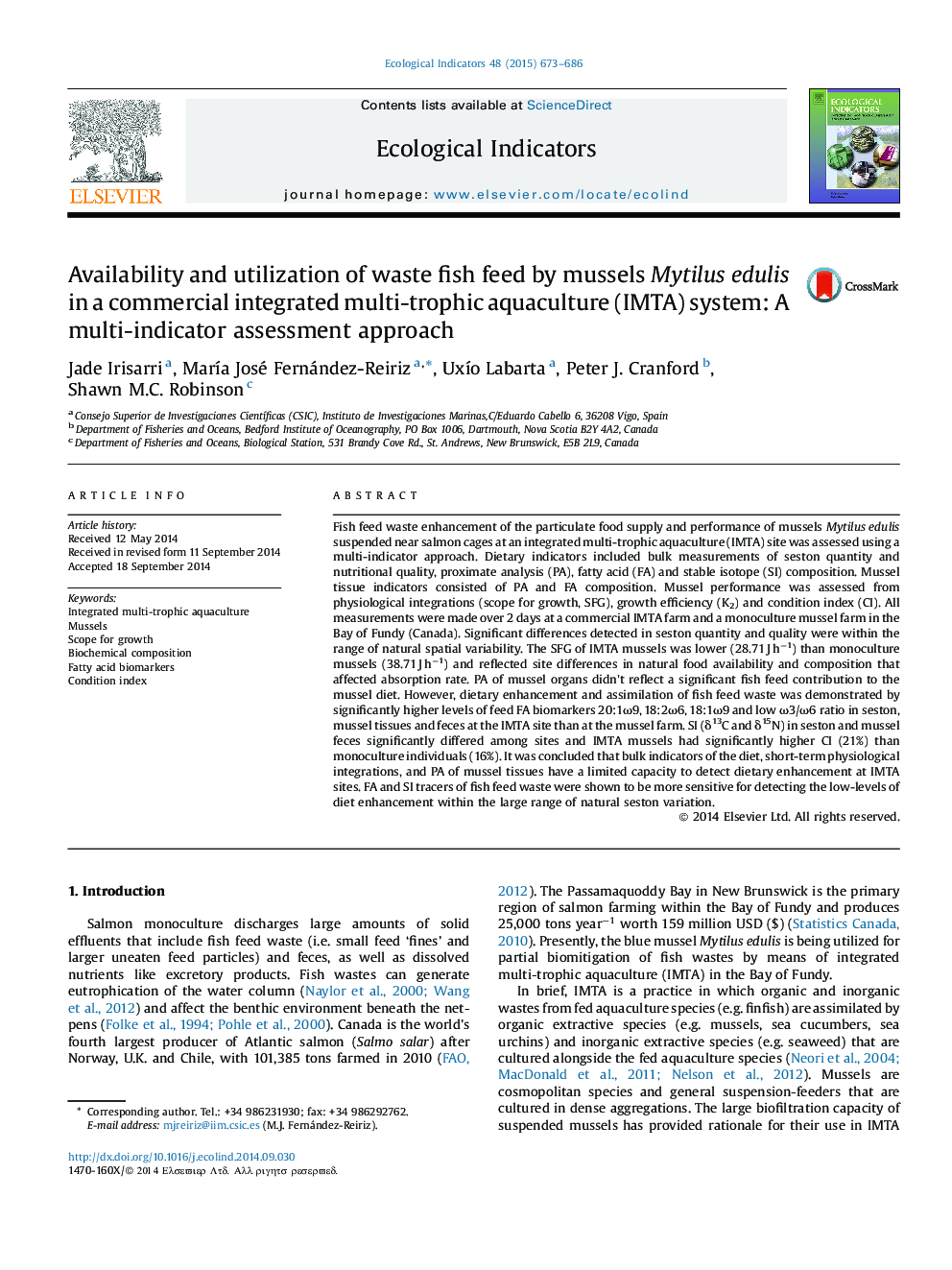| کد مقاله | کد نشریه | سال انتشار | مقاله انگلیسی | نسخه تمام متن |
|---|---|---|---|---|
| 6295135 | 1617153 | 2015 | 14 صفحه PDF | دانلود رایگان |

- Biochemical and physiological response of mussels cultured near salmon cages.
- Physiological indicators did not reflect fish feed waste utilization by mussels.
- Gross biochemical composition was also a weak indicator of dietary enhancement.
- Fatty acid and stable isotopes are more robust indicators of feed bio-remediation.
- Multi-indicator approach recommendable for integrated aquaculture assessment.
Fish feed waste enhancement of the particulate food supply and performance of mussels Mytilus edulis suspended near salmon cages at an integrated multi-trophic aquaculture (IMTA) site was assessed using a multi-indicator approach. Dietary indicators included bulk measurements of seston quantity and nutritional quality, proximate analysis (PA), fatty acid (FA) and stable isotope (SI) composition. Mussel tissue indicators consisted of PA and FA composition. Mussel performance was assessed from physiological integrations (scope for growth, SFG), growth efficiency (K2) and condition index (CI). All measurements were made over 2 days at a commercial IMTA farm and a monoculture mussel farm in the Bay of Fundy (Canada). Significant differences detected in seston quantity and quality were within the range of natural spatial variability. The SFG of IMTA mussels was lower (28.71 J hâ1) than monoculture mussels (38.71 J hâ1) and reflected site differences in natural food availability and composition that affected absorption rate. PA of mussel organs didn't reflect a significant fish feed contribution to the mussel diet. However, dietary enhancement and assimilation of fish feed waste was demonstrated by significantly higher levels of feed FA biomarkers 20:1Ï9, 18:2Ï6, 18:1Ï9 and low Ï3/Ï6 ratio in seston, mussel tissues and feces at the IMTA site than at the mussel farm. SI (δ13C and δ15N) in seston and mussel feces significantly differed among sites and IMTA mussels had significantly higher CI (21%) than monoculture individuals (16%). It was concluded that bulk indicators of the diet, short-term physiological integrations, and PA of mussel tissues have a limited capacity to detect dietary enhancement at IMTA sites. FA and SI tracers of fish feed waste were shown to be more sensitive for detecting the low-levels of diet enhancement within the large range of natural seston variation.
Journal: Ecological Indicators - Volume 48, January 2015, Pages 673-686